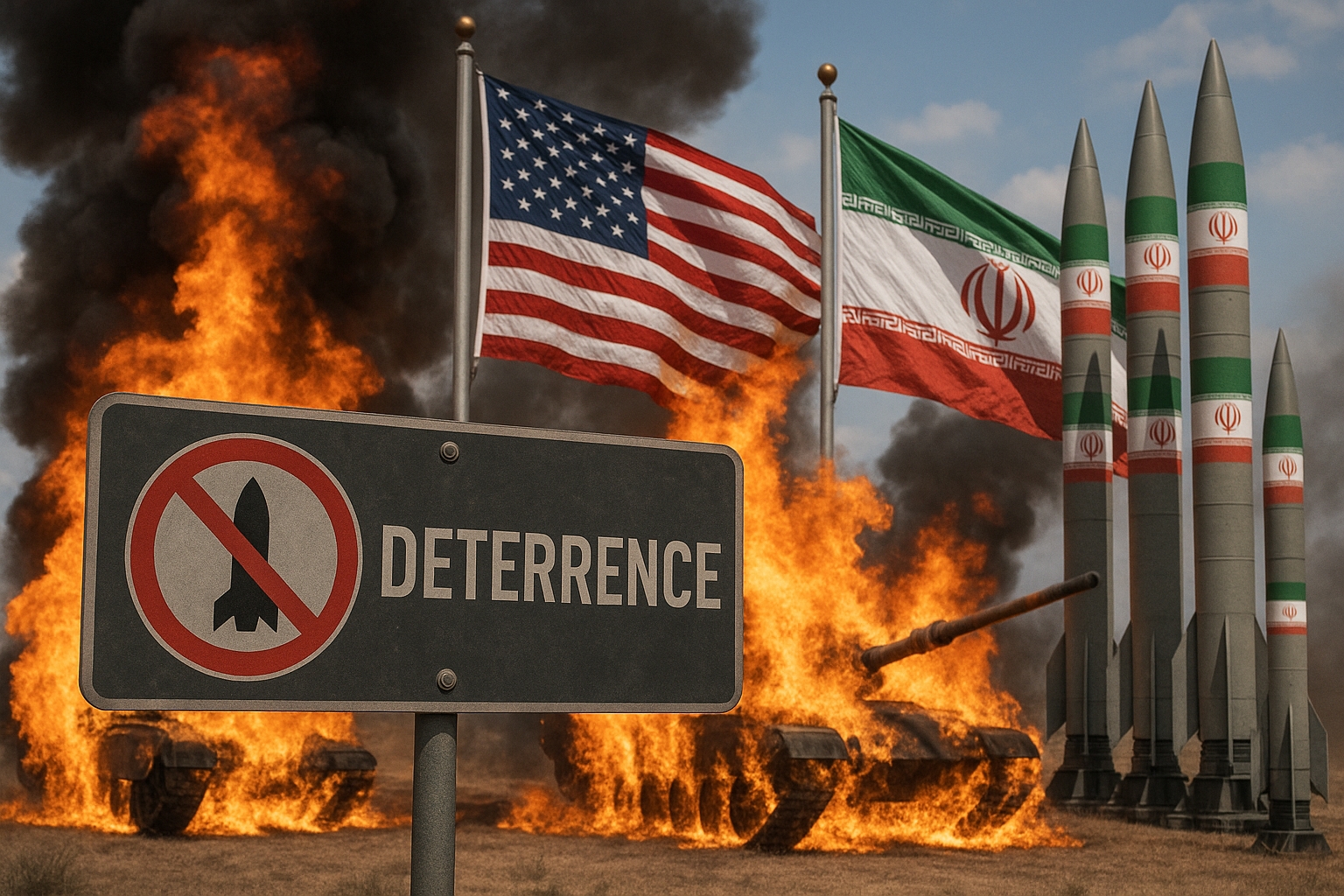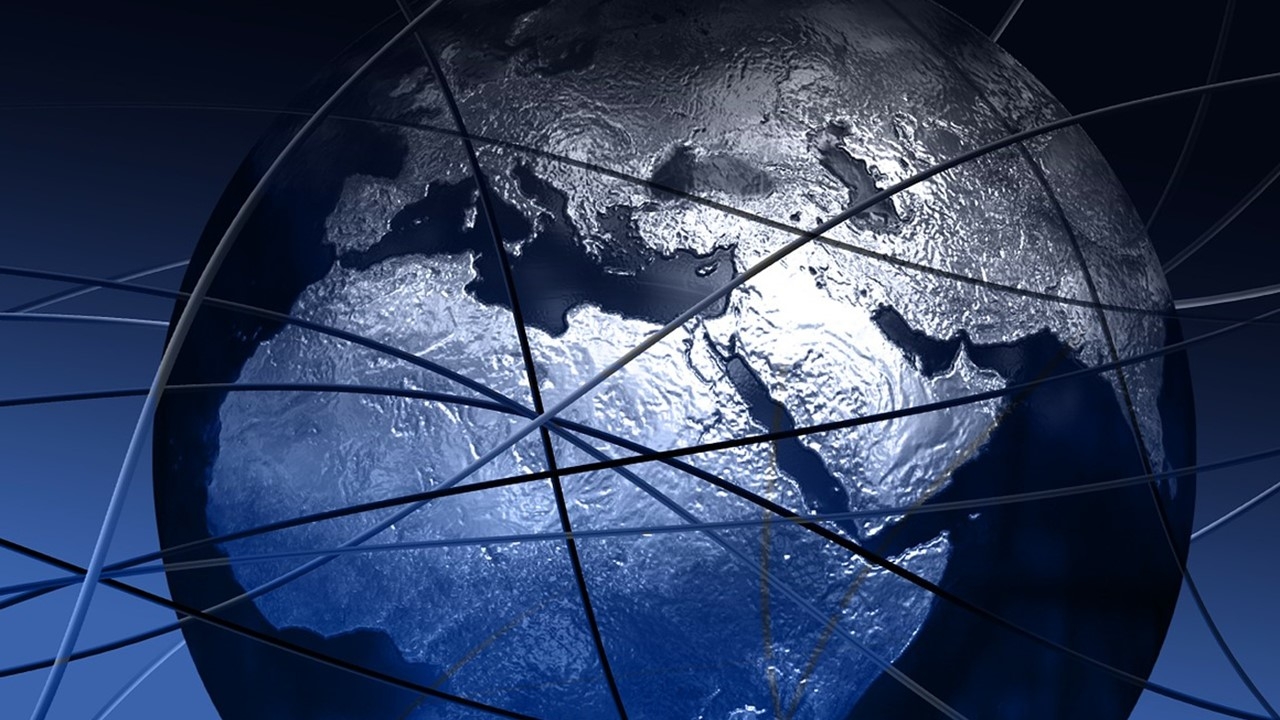Post-mortem Of The US-Israel War On Iran
Empowering Weak & OppressedS. Haider Mehdi
Muharram 06, 1447 2025-07-01
News & Analysis
by S. Haider Mehdi (News & Analysis, Crescent International Vol. 55, No. 5, Muharram, 1447)

The US-Israel attack on Iran will go down in history not as a war won or lost in the conventional sense, but as a moment that reshaped the trajectory of the global order. Far more than a clash of missiles and militaries, this conflict exposed the fault lines of empire, the limits of military dominance, and the irreversible shifts taking place across the geopolitical landscape.
At its core, this confrontation was driven by three explicit and interconnected objectives pursued by the United States and Israel, with Europe in tow.
The first objective was to permanently cripple Iran’s nuclear program by destroying key facilities and wiping out its uranium stockpiles—especially the 400 kilograms of 60% enriched uranium that Tehran had reportedly amassed. Second, to obliterate Iran’s military and missile command structure so thoroughly that Tehran would not be able retaliate effectively against Israel. Third, to trigger a wave of popular unrest that would pave the way for regime change, capitalizing on what western intelligence perceived as widespread domestic discontent within Iran.
None of these goals was realized.
The first failure—the attempt to decapitate Iran’s nuclear program—collapsed under the weight of strategic miscalculation. Iran’s nuclear infrastructure had long been hardened and relocated deep underground, in some cases as deep as 80 meters beneath the surface, well beyond the reach of the most advanced US bunker-busting munitions, whose maximum penetration capabilities fall short by more than 50 meters.
The airstrikes caused damage, but not devastation. Uranium enrichment equipment remained functional. Key nuclear scientists and engineers survived. The bombed facilities were symbolic targets, not operational kills.
The second failure—the attempt to paralyze Iran’s missile response capacity—was perhaps even more consequential. Initial Israeli and American estimates placed Iran’s missile stockpile at around 3,000. The actual figure, however, was closer to 20,000. These included a formidable mix of short-, medium-, and long-range ballistic and cruise missiles, many with advanced targeting and evasion capabilities.
Iran had distributed these assets across more than 300 hardened launch sites, with camouflage, decoys, and redundancies in place. Tehran demonstrated its capacity to not only launch sustained barrages, but to control the tempo, range, and strategic messaging of its strikes.
Israel, long accustomed to dominance in the skies, suddenly found itself outmatched in missile attrition. Its multi-tiered air defense system—built around the Iron Dome, David’s Sling, and Arrow interceptors—was rapidly depleted. Analysts estimated that after roughly two weeks of continuous engagement, the interception rate would drop below 50%, turning Israeli territory into a vulnerable and exposed zone.
The strategic calculus became clear: while Iran could absorb huge casualties and infrastructure damage and still continue, Israel could not. Its geographic compactness, population density, and economic centralization left it dangerously exposed.
The third failure—the fantasy of regime change—reflected a persistent misunderstanding of the Islamic Republic’s internal cohesion. Israeli and American policymakers, swayed by social media noise and exiled dissidents, misjudged the political landscape inside Iran. The targeted killings of Iranian military commanders and scientists were intended to fracture Tehran’s leadership and provoke an elite rupture.
Instead, it galvanized the Iranian establishment. The loss of high-ranking officials produced not fragmentation, but consolidation. Imam Khamenei’s leadership emerged not only unshaken but re-empowered, drawing legitimacy from the shared sense of resistance and martyrdom that has long defined the Islamic Republic’s national narrative.
This unity extended beyond the political elite. Large segments of the Iranian population—even those who harbor deep grievances against the state—rallied to defend national sovereignty in the face of foreign aggression. Government legitimacy, far from crumbling, found reinforcement in the crucible of war. Washington and Tel Aviv miscalculated not only the strength of the system but patriotism of the Iranian people when threatened by external powers.
When the United States joined the fray directly, launching airstrikes on Iran’s nuclear sites, it did so not out of confidence, but desperation. The strikes were limited and calculated. Their primary purpose was psychological: to pressure Iran into accepting a ceasefire without compelling Israel to continue a war it was on the verge of losing.
The message was blunt—escalation would bring the full weight of American firepower—but it was also hollow. Washington had no appetite for a protracted regional war that could draw in Hizbullah, ignite oil prices, and fracture NATO’s already-strained consensus.
In the hours preceding the ceasefire, the likely trajectory had become evident. Iran was prepared to escalate. It had the arsenal, the will, and the ideological justification. Israel, by contrast, had no viable pathway forward. Sustained Iranian missile attacks would have produced destruction on a scale the Israeli public had never experienced.
While both countries faced catastrophic consequences, the asymmetry was undeniable: Iran, with its vast territory, population, and strategic depth, could survive. Israel could not.
It was in this context that the US intervened—not to prevent further bloodshed, but to prevent an existential collapse of its closest regional proxy. The ceasefire was not a diplomatic triumph; it was a geopolitical retreat.
But the war is not over. It has simply entered a new phase.
For Iran, the path forward is fraught with risk, but also opportunity. If Tehran is to avoid another confrontation of this magnitude, it must take several decisive steps. Foremost among them is the finalization and public demonstration of its nuclear deterrent. The logic is unambiguous: as long as Iran is believed to be non-nuclear, it remains vunerable. Once it is known to possess a credible nuclear capability, the nature of all future conflicts changes fundamentally. Deterrence replaces destruction.
Simultaneously, Iran must address the internal vulnerabilities that external actors continue to exploit. It must expand civic freedoms, provide greater latitude for dissent, and allow for more pluralistic expression—less as a concession, and more as a national security imperative. Authoritarian rigidity breeds instability; controlled flexibility produces resilience.
Iran must also modernize its military infrastructure with urgency. The future of regional deterrence will depend on integrated defense systems capable of detecting and neutralizing stealth aircraft, hypersonic weapons, and cyber attacks.
Tehran must deepen its military cooperation with China, particularly in acquiring early-warning systems, radar integration platforms, anti-stealth capabilities, and the next generation of combat aircraft such as the J-35. Maritime defense, including anti-submarine and drone swarm technology, must also become central to Iran’s strategic posture.
Yet, even with these upgrades, the threat from the United States and Israel will not abate. Their core strategic aims remain unchanged: destroy Iran’s military-nuclear capacity, fragment its regional alliances, and install a pliant regime in Tehran. In the long arc of western strategy, these goals are inseparable from their broader efforts to contain China and reshape West Asia (aka the Middle East) into a pliant economic and military sphere.
The secondary objective—often unstated but no less urgent—is the denuclearization of Pakistan. For decades, the Pakistani deterrent has remained the unspoken red line in South Asia. But in the wake of the war on Iran, and in preparation for a longer campaign against Chinese influence, there will be renewed attempts—diplomatic, covert, and coercive—to disarm or neutralize Pakistan’s nuclear capabilities. Without Iranian resistance and Pakistani deterrence, the entire Muslim world becomes strategically exposed, unable to challenge western and Israeli domination.
Indeed, it all circles back to two central imperatives: to arrest China’s unstoppable economic momentum, and to preserve the security of the zionist project. Every policy decision, every military deployment, every trade agreement and sanction mechanism emerges from these two obsessions. And yet, both are unraveling.
A tectonic shift is underway.
The first axis of change is global. The United States, long seen as the architect of order, is now perceived as an enabler of chaos. Its complicity in Gaza’s genocide, its failed gambits in Ukraine, and its muddled posture in the Israel-Iran conflict have combined to reveal a superpower in decay. Its capacity for projection remains formidable, but its moral authority has evaporated.
The second axis is regional. The myth of Israeli military invincibility has shattered. For the first time in its modern history, Israel faced a regional actor capable of striking back with precision, intensity, and consistency. Its aura of deterrence has dimmed. India, similarly, has lost its coercive edge in South Asia, as its posture becomes increasingly reactive and its strategic overreach invites internal fracture.
The third axis is societal. In what may appear as an unrelated political development, a seismic cultural shift is underway within the heart of the US political establishment. The Democratic primary victory of 33-year-old Zohran Mamdani in New York City—a candidate unapologetically critical of Israeli apartheid—has reverberated far beyond his district. In the very bastion of pro-Israel influence, a new generation has arisen.
Disillusioned by endless wars, enraged by Palestinian suffering, and unafraid of the old lobbies, this movement signals the beginning of the end of blind zionist consensus in American politics.
This event may, in retrospect, be remembered as a paradigm shift equal in magnitude to the post-9/11 era—only this time, the tide is not toward greater war, but toward confrontation with uncomfortable truths. A reckoning looms.
The world is changing. And those who ruled it through deception, propaganda, and brute force are now losing their grip.



